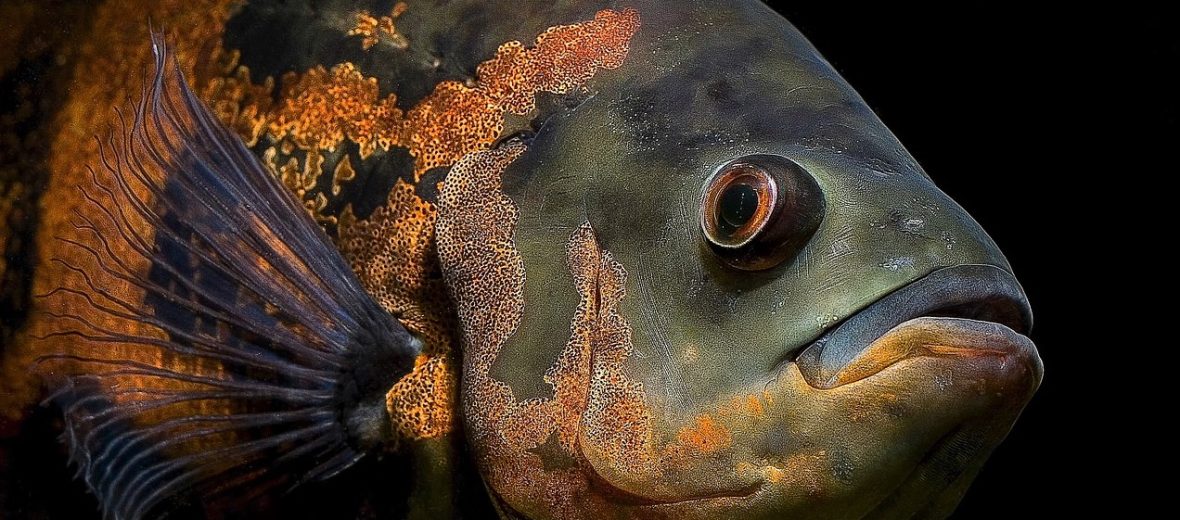
The oscar, aka tiger oscar, marble cichlid, or velvet cichlid, hails from tropical South America. Through intentional and accidental means, these fish have been introduced to Australia, China, India, and the United States. This is a freshwater fish, known as a cichlid. These fish breed readily in captivity and the wild populations are under no real threat, sans habitat destruction and water pollution. They are not currently evaluated by the IUCN.
First the Stats…
Scientific name: Astronotus ocellatus
Weight: Up to 3.5 lbs.
Length: Up to 18 inches
Lifespan: Up to 20 years
Now on to the Facts!
1.) Oscars are a commonly found and popular aquarium fish in Europe and in the United States.
2.) In local markets, these fish are typically sold as food.
3.) The oscar was originally described by Louis Agassiz in 1831 as a saltwater fish. This was later corrected.
4.) These fish have a host of junior synonyms, such as: Astronotus orbiculatus, Astronotus ocellatus zebra, Acara compressus, and Acara hyposticta.
5.) The wild specimens are usually dark colored with yellow-ringed spots or ocelli on the caudal peduncle (the narrow part of the fish’s body, between the body and the tail, aka caudal fin) and on the dorsal fin. This coloration is thought to aid as a sort of piranha deterrent.
But wait, there’s more on the oscar!
6.) Juveniles are typically striped. As they age, their colors and patterns change.
7.) They’re native to Brazil, Colombia, Guyana, French Guiana, Ecuador, Suriname, Peru, and Venezuela.
Did you know…?
Oscars have the ability to quickly change their coloration. This is used, in part, for combat and territorial displays.
8.) These fish, in the wild, can be found in slower-moving portions of the Amazon River basin.
9.) Larger females can lay up to 3,000 eggs, each season.
10.) Like a majority of cichlids, the parents practice brood care. This is where the eggs and juveniles are guarded by the parents, till which time as the parents feel the young are able to fend for themselves.
But wait, there’s still more on the oscar!
11.) Fish, snails, shrimp, flies, grasshoppers, crickets, and insect larvae, as well as nuts and fruits are seasonally consumed.
12.) They are preyed on by larger fish, crocodilians, and birds of prey.
Now a Short Oscar Video!
Be sure to share & comment below! Also, check out the Critter Science YouTube channel. Videos added regularly!
Want to suggest a critter for me to write about? Let me know here.



